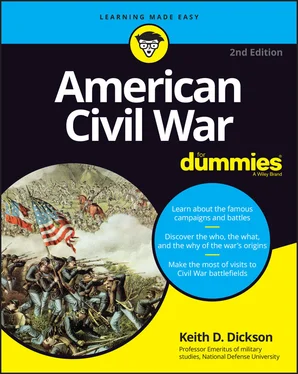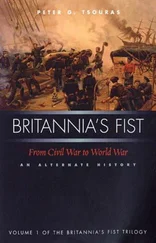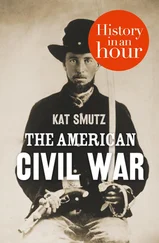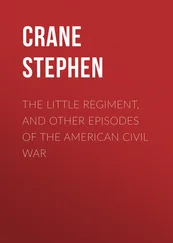Keith D. Dickson - American Civil War For Dummies
Здесь есть возможность читать онлайн «Keith D. Dickson - American Civil War For Dummies» — ознакомительный отрывок электронной книги совершенно бесплатно, а после прочтения отрывка купить полную версию. В некоторых случаях можно слушать аудио, скачать через торрент в формате fb2 и присутствует краткое содержание. Жанр: unrecognised, на английском языке. Описание произведения, (предисловие) а так же отзывы посетителей доступны на портале библиотеки ЛибКат.
- Название:American Civil War For Dummies
- Автор:
- Жанр:
- Год:неизвестен
- ISBN:нет данных
- Рейтинг книги:4 / 5. Голосов: 1
-
Избранное:Добавить в избранное
- Отзывы:
-
Ваша оценка:
- 80
- 1
- 2
- 3
- 4
- 5
American Civil War For Dummies: краткое содержание, описание и аннотация
Предлагаем к чтению аннотацию, описание, краткое содержание или предисловие (зависит от того, что написал сам автор книги «American Civil War For Dummies»). Если вы не нашли необходимую информацию о книге — напишите в комментариях, мы постараемся отыскать её.
American Civil War For Dummies,
American Civil War For Dummies
American Civil War For Dummies — читать онлайн ознакомительный отрывок
Ниже представлен текст книги, разбитый по страницам. Система сохранения места последней прочитанной страницы, позволяет с удобством читать онлайн бесплатно книгу «American Civil War For Dummies», без необходимости каждый раз заново искать на чём Вы остановились. Поставьте закладку, и сможете в любой момент перейти на страницу, на которой закончили чтение.
Интервал:
Закладка:
Comparing Northern and Southern Resources
For the Union and the Confederacy, any strategy had to be based on an assessment of resources. What were the nation’s elements of power? How could they be used to accomplish the war aims of each nation? These elements of power become the resources (both tangible and intangible) that the Union and the Confederacy would rely on to fight this war. Whoever would win would apply these resources in the best manner over time. Sometimes, as in the case with the Union, some resources were not instantly apparent before the war. During the course of the war, the Union’s moral power proved to be a very important factor in negating the Confederacy’s resources. But no one understood it or appreciated it until two years after the war began.
Let’s take a look at the resources the Union and the Confederacy possessed at the beginning of the war and compare them by category. The military men of both sides had a very tough assignment in assessing strategic resources and deciding how to marshal them to support the conduct of the war. No one had any experience in taking on such a monumental task to support military operations across a vast territory that stretched from the Mississippi River to the Chesapeake Bay. Physical and material resources would be required in as yet unimaginable quantities. The will of each country to sustain such a monumental effort would play an important role in determining victory or defeat.
Industrial power
Industrial power includes raw materials (coal, iron, salt, niter, oil, copper, tin) and the factories to produce weapons, clothing, equipment, train engines, rails, and munitions. Southern factories were insignificant in comparison to the production capacities of factories of the North. Northern factories were already producing shoes, clothing, rails, and locomotives and were able to respond quickly to making these items available to the Union armies. Other factories were able to convert to producing weapons or weapons components very quickly. The Northern industrial base was capable of manufacturing every item (no matter how insignificant) needed to sustain an army in the field. From the onset, Southern factories were undermanned and overwhelmed early by wartime production demands. Although building an impressive capacity with limited resources, the Confederacy continually struggled.
Agricultural advantages: Food and crops
Agricultural resources include food for the population and their animals, as well as nonfood crops (dyes, tobacco, cotton, hemp, timber); they also include the numbers of animals available both for food and for transportation. The South, a predominantly agricultural society, produced some food crops, but, ironically, not the amount that Northern farms did. The reason for this was the heavy reliance on staple, or cash, crops — tobacco and cotton. “Cotton is King!” was the motto of the prewar South. Indeed, it was. The South’s money and wealth came from cotton and tobacco, not food crops. The Southern economy depended on being able to sell both cotton and tobacco on the international market. No other region of the nation, or the world for that matter, could grow these crops in abundance. It is not surprising, then, to see that economically, food production in peacetime was less important to the South than cotton and tobacco production. In wartime, however, it made a great difference.
Cotton: The double-edged sword
In peacetime, all the world, but especially Great Britain and France, needed Southern cotton to feed their factories. For the South in wartime, though, cotton became a double-edged sword. Cotton hurt the South by taking up acreage that could be used to produce food for the Southern armies and civilian population. On the other hand, cotton represented a powerful strategic weapon for the South. Without cotton, European industries would have to shut down, causing great economic distress. European manufacturers could put pressure on their governments to do something about the lack of cotton. Cotton for the Confederacy could become a political bargaining tool to gain diplomatic recognition from the European nations.
Cotton as collateral
Financially speaking, cotton was white gold. Cotton shipped to European markets would fetch high prices, especially when the Europeans began to feel the pinch of cotton shortages as a result of the war. In turn, money from cotton sales could be used to purchase the weapons and supplies for Southern armies that the Confederacy could not produce itself. In addition, cotton could be used as collateral for foreign loans to support the Confederate government. Cotton became both a diplomatic and a financial advantage that President Davis hoped would be the decisive factor that would win the war for the Confederacy.
Soldiers and laborers: Population
Large-scale war requires enormous human resources, both in terms of soldiers to fill the ranks of the armies and workers to produce the means to sustain those armies as well as support the civilian population. The several million immigrants who flooded into the North between 1830 and 1860 provided recruits, agricultural laborers, and industrial workers. Few immigrants came to the South, leaving the Confederacy to rely on its white male population for soldiers. Slaves were a critical strategic resource, providing in some cases the skilled labor in factories and logistical support for the armies, as well as working on the farms to produce food. Women also were employed in a variety of roles in supporting the wartime production effort. During the Civil War, about 45 percent of the eligible males in the North served in the army. In the South, about 90 percent of eligible men served in the army.
Financial wealth
The financial advantages include the structure and soundness of the banking system, availability of credit, debt structure of the government, and the financial system, as well as the government’s tax system. The availability of ready cash reserves (gold and silver) and numerous banks in the North allowed the government to borrow and pay for the costs of raising armies. The South, lacking these financial resources because most of its wealth was tied up in land and slaves, was crippled from the very beginning to finance the huge expenditures necessary to fight a war. The short time between the creation of the Confederate government and the onset of a war for independence caused enormous challenges simply to organize a system of taxation and obtain credit.
Analyzing the statistics for both sides
Statistics and numbers can be a useful tool, but the insightful interpretation of them actually makes the picture of events crystal clear. See Table 5-1for the major resources of the Union and the Confederacy (excluding the Border States) in 1861. Without making too much of these statistics, some points need to be made. At first glance, the manpower resources of the North appear dominant. In actuality, the South had a slight strategic advantage. As an industrial society, a significant proportion of the North’s manpower was tied up in the factories. Also, many farmers needed to remain home to produce food, further cutting into the manpower pool. The three and a half million slaves in the South, a predominantly agricultural society, allowed white Southerners to serve in the army in far greater numbers, proportionately, than Northerners.
TABLE 5-1:Distribution of Major War Resources
| North | South | |
|---|---|---|
| Population | ||
| 18.5 | 5.5 million 3.5 million (slaves) | |
| Agricultural | ||
| Corn | 396 | 280 millions of bushels |
| Wheat | 114 | 31 millions of bushels |
| Oats | 138 | 20 millions of bushels |
| Cotton | 0 | 5 million bales |
| Tobacco | 58 | 199 million pounds |
| Rice | 0 | 187 million pounds |
| Animal Resources | ||
| Mules | 330 | 800 thousand |
| Cows | 5 | 2.7 million |
| Beef Cattle | 5.4 | 7 million |
| Sheep | 14 | 5 million |
| Hogs | 11.3 | 15.5 million |
| Industrial Capacity | ||
| Railroad Mileage | 20 | 9 thousand track miles |
| Number of Factories | 100.5 | 20.6 thousand |
| Skilled Workers | 1.1 million | 111 thousand |
| Financial | ||
| Bank Deposits | $189 million | $47 million |
| Gold/Silver on Hand | $45 million | $27 million |
Clearly the Union had all the advantages in the areas of railroad mileage, manufacturing, and finance. Railroads became a strategic asset quickly in this war to gain the advantage over the enemy. For the first time in history, men and equipment in wartime were moved across long distances by rail. Railroads also moved supplies to the armies and raw materials to factories. They became the lifeline of modern war. Do not get the idea that just because the North had more advantages than the South that the war was a predetermined victory. If that were the case, the war would have been over very quickly. Remember, these advantages do not by themselves determine victory. It is how well they are used to support the war’s ultimate goal that makes these resources decisive. The South used its fewer resources more efficiently than the North at first, giving the Confederacy an initial advantage. It took the Union far longer to harness its resources and apply them to the war effort.
Читать дальшеИнтервал:
Закладка:
Похожие книги на «American Civil War For Dummies»
Представляем Вашему вниманию похожие книги на «American Civil War For Dummies» списком для выбора. Мы отобрали схожую по названию и смыслу литературу в надежде предоставить читателям больше вариантов отыскать новые, интересные, ещё непрочитанные произведения.
Обсуждение, отзывы о книге «American Civil War For Dummies» и просто собственные мнения читателей. Оставьте ваши комментарии, напишите, что Вы думаете о произведении, его смысле или главных героях. Укажите что конкретно понравилось, а что нет, и почему Вы так считаете.












